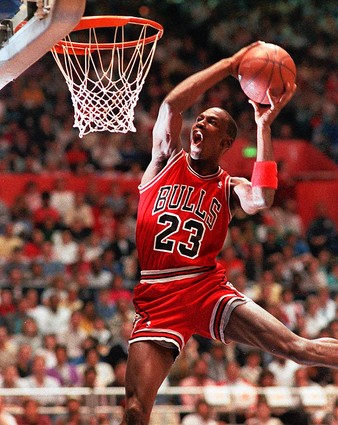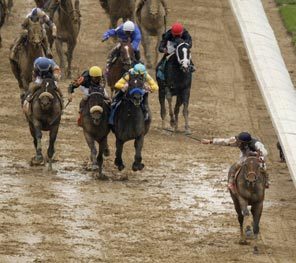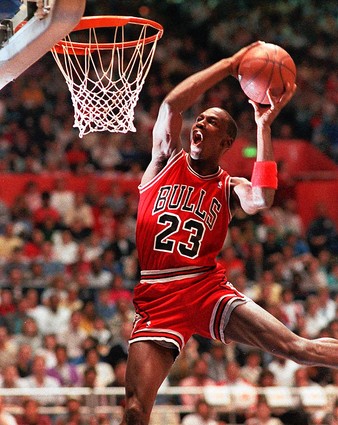
(This is Part 4 of a Series I’m writing about regarding The Importance of Self Confidence in Athletics. This series stems from a research paper I wrote in 2010 for my Master’s in Athletic Administration and Coaching.)
There are so many different ideas out there about developing Self Efficacy and Self Confidence, coaches can be easily overwhelmed. Therefore, I will focus on Bandura’s four principles in building Self Confidence with this post.
These four principles are:
1. Performance Accomplishments
2. Vicarious Experience
3. Verbal Persuasion
4. Emotional Arousal
Performance Accomplishments
Performance accomplishments are successes on the field or court that an individual or team have accomplished. Michael Jordan said it best when he said “My whole NBA career I always thought back to the 1982 NCAA Championship game. I’m not saying that you can’t be confident in the clutch if you’ve never made the big play before – obviously, I was already confident before that shot. But that one moment initiated so much. Every shot after that, I felt I could make (Raedke/Burton 2008).”
The main way that I plan to use performance accomplishments to build confidence is through practice goals that we will have as a team. We will use these practice goals as a standard of success/failure. I will have one or two practice goals each day, that’s it – not too many and not too few. This goal will be posted for all players to see and we will reflect upon it immediately after practice. Towards the beginning of the season together, the coaching staff will set very attainable goals to help to build the confidence early.
Vicarious Experience
Vicarious experience is helping athletes experience success indirectly, though either modeling or imagery. Modeling is watching others demonstrate how to perform a skill or strategy. Imagery is a mental idea of how to perform a skill or mentally rehearse a learned skill (Burton/Raedke 2008).
I already have something in my files for modeling to my players a great picture of success that definitely applies to our football team. It is an article and picture of the recent 50-1 Kentucky Derby winner that was last place at the ¼ pole, the ½ pole and the ¾ pole. It wasn’t until the last quarter of the race that he came on strong to win. I am going to show my kids the two pictures that I found in Sports Illustrated – one with the all of the horses at the half way mark and one with all of the horses at the finish line. The point of showing these pictures and talking about this story is to teach the athletes that it is not how you start, it is how you finish. I will apply it in a variety of ways to my team. Although this horse did not play football and we are not watching him perfect the skills that my boys will use, I will use this modern-day sports story to illustrate an important aspect of confidence – vicarious experience. We will also watch this horse race to see just how this horse was able to stay in the game to win the race. There are times; I just know it, throughout the course of this season that we will come back to this story.


I also want to implement imagery this year with my athletes. But, at this point, I am not sure exactly how that will happen, when it will happen or where it will happen. I still have to think further about this aspect of vicarious experience and how to apply it to my team.
Verbal Persuasion
My weakest area as a coach is verbal persuasion, Bandura’s third principle of building self-confidence in athletes. It is a weak area for me because I have never really had a coach that was great at this, save for little league. Most of the coaches that I played for at the high school level would be considered “old school.” They are the type of coaches that don’t necessarily believe in the power of verbal persuasion.

There are three things that I will incorporate in to my program this year to help with verbal persuasion in order to build self-confidence.
First, I will keep a checklist on my attendance roster that will serve as an aid to hold me accountable to personally compliment three players a day. I will inform my assistant coaches that I will be doing this and will ask them to hold me accountable to make sure it happens. Every day starting in August Training Camp, I will compliment three players with a brief one on one time either before or after practice.
Second, I will teach players to develop a Self Confidence Script similar to page 196 in our course textbook. This script will serve as a sort of brag sheet that players will have to look back on throughout the course of the year and hopefully in to their lives.
We will start this Self Confidence script by having a team building exercise where each player is represented on a piece of paper that is pinned to the walls in the weight room and each player will have to write one positive thing on everybody’s piece of paper. We will simply go around the room writing positive stuff on each other’s paper. This will help a great deal in setting the framework for positive self talk.
Lastly, I will write notes of encouragement each week to three football players. Throughout the course of the season, I will “hit” each player in our program at least one time. These notes will be mailed home and will serve as encouragement builders and something that the players will always have to help build their self-confidence. These may be notes of congratulations for accomplishments from the prior week’s practices or games, or they could relate to something happening on campus.
Emotional Arousal
Arousal control is the last of Bandura’s principles that I will address. Controlling the physiological symptoms which tend to affect athlete’s nervous systems before a contest is arousal control. Some physiological symptoms of arousal are: a pounding heart, sweaty palms, butterflies, nervous ticks, throwing up and more. These symptoms can be overwhelming to athletes who do not know how to control them (Burton/Raedke 2008). When athletes don’t have these things under control, their confidence may be weakened because they feel overwhelmed by their arousal mechanisms. I know of one specific athlete on our team that this happens to. He simply cannot calm down enough to focus on the task at hand and ends up playing very nervous, which leads to lack of confidence and poor performance.


